

Did you know that LED bulbs use 80% less energy than traditional incandescent light bulbs?
When it comes to energy-efficient lighting options, LED bulbs are the best choice. LEDs consume far less power and last ten times longer than incandescent bulbs.
Like most homeowners, you’re probably overdue for an LED bulb upgrade. The initial cost of LED bulbs is higher than traditional incandescent or CFL bulbs; they last much longer and use significantly less energy.
In this guide to led lighting, we’ll explore some steps you should know before buying led light.
We’ll go through some of the essential reasons LED bulbs are so beneficial in your house or workplace.
Whether you’re about to make the jump or simply looking for information before making a purchase, this article has all the answers to your questions about LEDs!
LEDs are a light source that is often used in signs and displays. The acronym stands for “Light Emitting Diode” and refers to any semiconductor light source that emits visible light when an electric current runs through it. Although LED lighting has only recently become more popular, the technology was first developed by Russian inventor Oleg Losev in 1927.
Small, compact, and cylindrical are the words that come to mind when thinking of LEDs. LED lights are available in multiple colors, including white, red, green, blue, and yellow. They can also be combined to create virtually any color imaginable.
Before you buy an LED light bulb, there are a few factors that you will need to consider to get the most out of your purchase. Ensure that the power draw is compatible with your electrical system and fixture before purchasing an LED light bulb. If your home uses dimmer switches, it’s essential to choose a brand of LED light bulbs compatible with these systems, as some are not.
You should have a complete idea about the IP rating of led light before buying. You can read the full guideline here.
We have a complete article about some of the common issues of led light
Let’s have a detailed discussion about this:
Lumens are for LEDs, as watts are for CFLs. So the wattage of a product is not always a good measure to judge its brightness. LEDs have much higher lumens per watt than incandescent, so they can often produce more light with lower wattages. When comparing a 60-watt incandescent to a 9-watt LED bulb, for example, you’ll see that it is nine times brighter.

LED bulbs are available in a wide range of voltages. For example, you can find LEDs that run on standard household voltage, around 120 volts. This is the same as incandescent bulbs. You can also find LED bulbs compatible with solar panels and batteries. They can even run on voltages as low as 3 or 4 volts!
LED lights are available in a wide range of color temperatures, so you can get just the warmth you want. But if you aren’t sure what color temperature is best for your needs, stick with soft white bulbs. They emit a classic, warm glow and go well with most décor schemes. If you’re looking for an electric blue or green to add a bit of color or modern look, then cool white or daylight LED bulbs might be what you’re looking for. LEDs also come in many different shades of white and other colors like red and green, serving as holiday lights.
Always check the box for color based on the temperature displayed on the Kelvin scale. The higher the Kelvin number, the bluer the light, and the lower the Kevin number, the hotter the light.
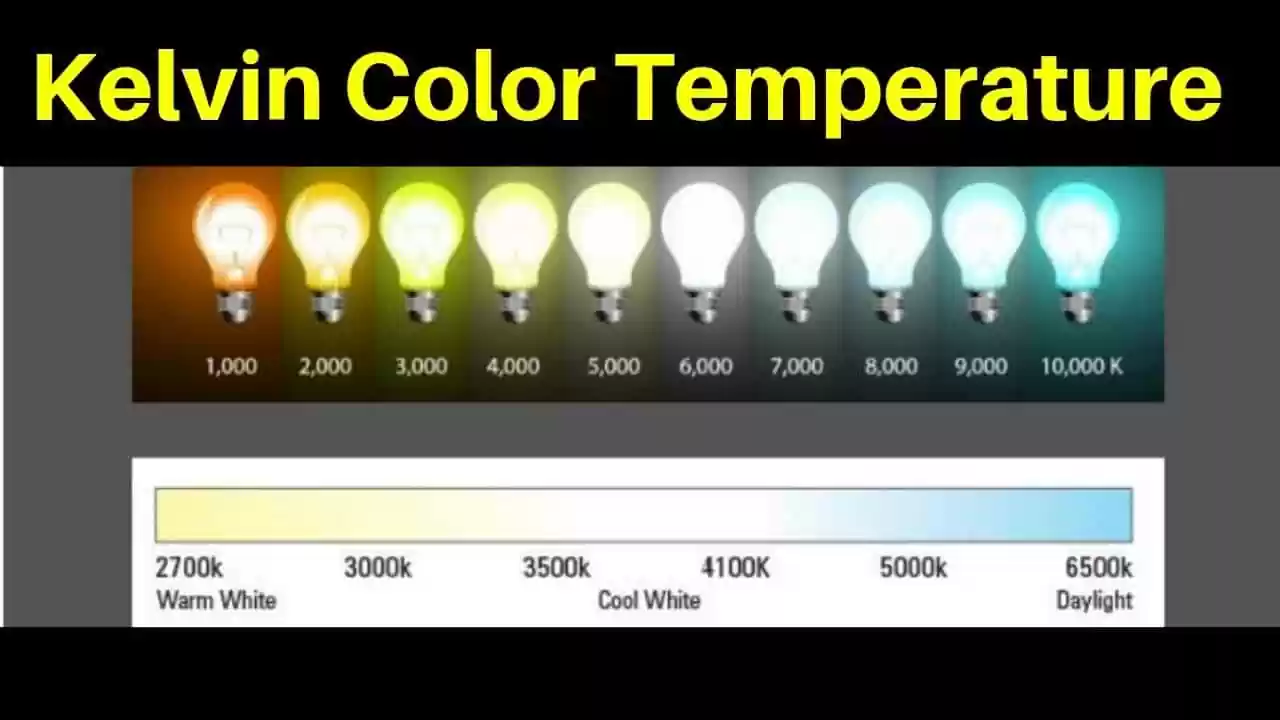
LED light bulbs are more energy-efficient than CFLs. The last 25 times longer consume 80 percent less energy than traditional incandescent lights and save you $75 per month.
According to the research US today, LED lights to consume 75-80% less energy than incandescent bulbs, saving customers up to $75 per month.
If you use LED bulbs in your home, your carbon footprint will be reduced by almost 670 pounds of CO2 per household. According to the research of Energy.gov, it is found that a 60-watt incandescent bulb is equivalent to an equivalent 12-watt LED.
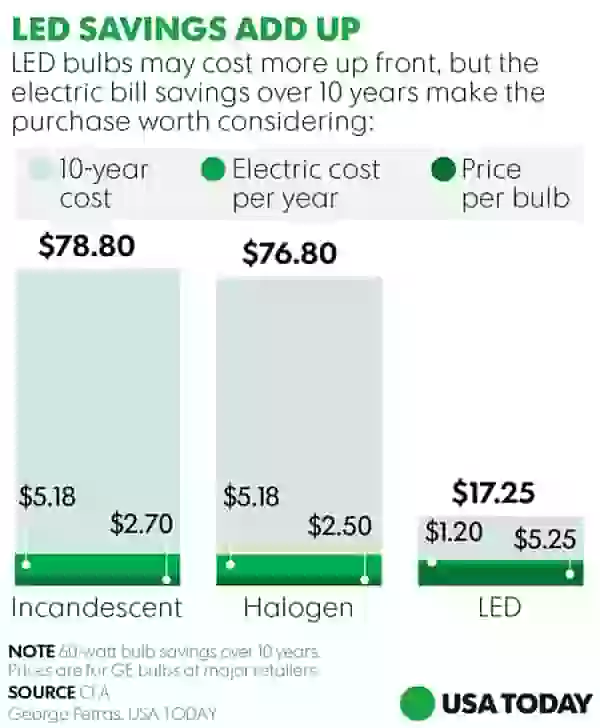
LEDs are cool to the touch, so you don’t have to worry about your kids burning their hands on an LED bulb. This makes them especially good for under-cabinet lighting and lamps that can be touched or reached easily. Avoiding LED bulbs in enclosed fixtures is recommended due to heat build-up, shortening their lifespan.
LEDs are available in the screw, bayonet, and wedge sockets. Make sure your old sockets are compatible with the LED bulb you want to buy. Otherwise, you’ll need to change the socket too for it to work.
When purchasing a new LED, remember to select the right spot, depth, and socket style. Even if you’re switching from CFL to LED, it’s essential to choose the proper position, depth, and kind of socket. Old or damaged sockets should always be replaced.
There are different types of led sockets like:

You will need to check the quality of your LED bulb as some might not last as long as others. However, many great brands offer a warranty on their products and replacements if something were to go wrong with them. Almost all LEDs are rated for a 5,000-hour lifespan, but some can last up to 25,000 hours. You will want to check the box or ask someone who has bought these products before if you have any doubts.
LED lighting is available in various shapes and styles, including spotlights, tubers, bulbs, panels, alphanumeric displays, high-power LEDs, etc. Application-Specific LEDs are designed to emit light of specific frequencies tailored for use in applications such as traffic lights. LED technology’s rapid progress has resulted in greater product availability, improved manufacturing efficiency, and decreased pricing. The following are some of the most popular forms of LED types:
Another type of LED that is becoming the most popular type of LED light today is tiny LEDs, including chip, nano, and pico LEDs.
These lights are usually tiny and come in only one color or form. Mini LED technology is a new development in the LED market. Its small size and low power consumption make it perfect for portable smartphones and tablets.
These LEDs are primarily used in electronic appliances like TV to display information such as the channel or volume.
Mini LEDs are LED lights about 1/10 the size of a traditional LED. They’re typically used for displays and indicators and can come in any color.
This type of LED light comes in different forms like:

You’ve probably noticed that the halogen bulb you’ve been using in your track lighting for several years has vanished from the market recently. LED spotlights have taken the place of halogen bulbs due to their low energy requirements, long life spans, and broad color spectrum.
LED spotlights are directional LED lights designed to emit intense light beams in a specific direction. Their small size and low power consumption make them perfect for task lights or accent lighting.
Spotlights usually have a reflector inside to direct the light in a specific direction, unlike ambient or general lights that emit light in all directions equally. Hoods can be used with spotlights when soft lighting is required.
This type of LED light provides a one-directional beam. This light is used mainly to light objects or surfaces from just one direction, unlike the ambient lights that equally emit light in all directions.
LED spotlights are perfect for task lighting and provide an intense light beam. They’re ideal for use in the home, office, or workshop. There are different types of spotlights, including:
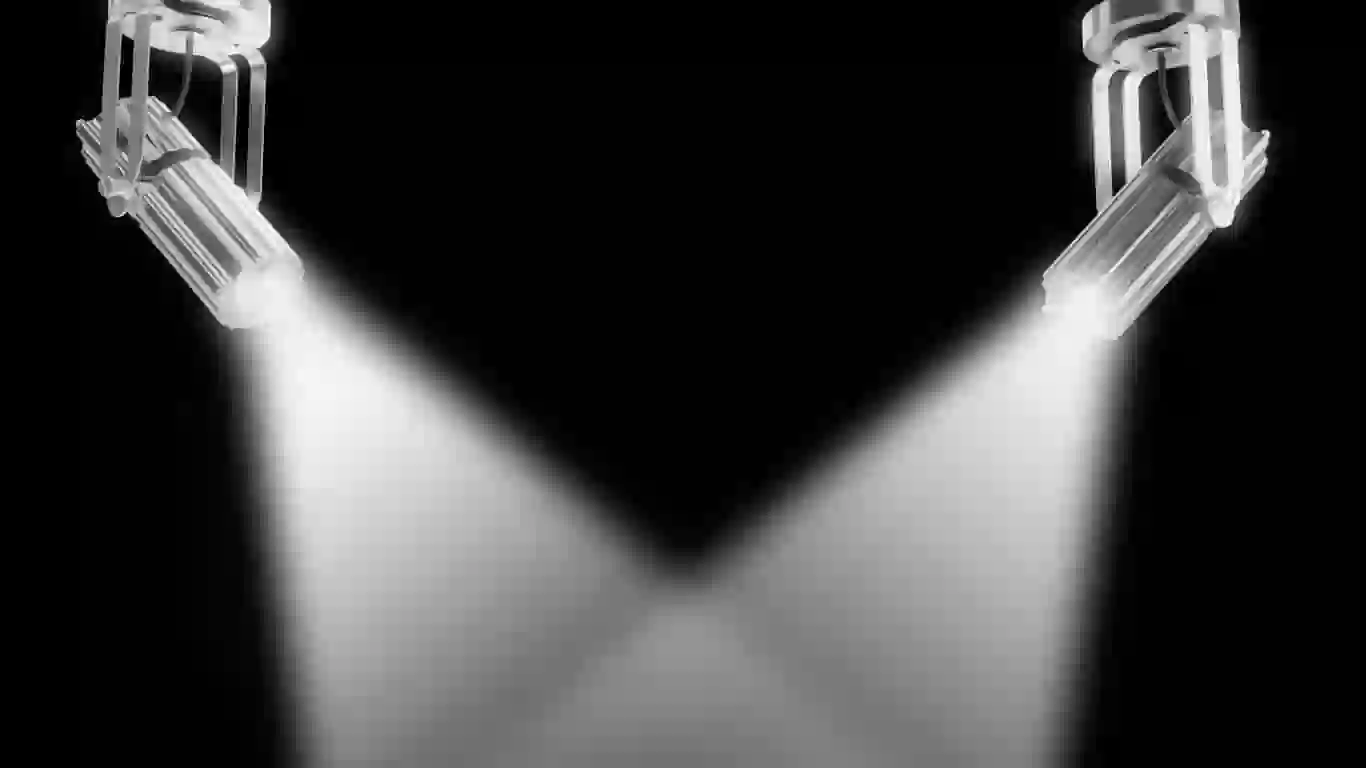
LED tubes are LED lamps used to replace fluorescent tubes in fluorescent tube luminaires with G5 and G13 bases.
LED tube lights are cylindrical, with several LEDs encased on the inside to produce powerful lighting effects. These tubes typically emit between 100-300 lumens of light and last for 50,000 to 100,000 hours.
LED tube lights are the most popular type of LED light because they’re flexible, emit much light, and have a long life span.
LED tube lights are a type of ambient LED light. They’re available in various shapes and sizes, but most are long and thin.
LED tube lights are perfect for home, office, or workshop use. Tube lights usually have a diffuser inside to scatter the light and create an even glow.
Unlike directional LED spotlights, they’re used to equally lighten objects and surfaces from all directions.
Different Types of LED Tube Lights:
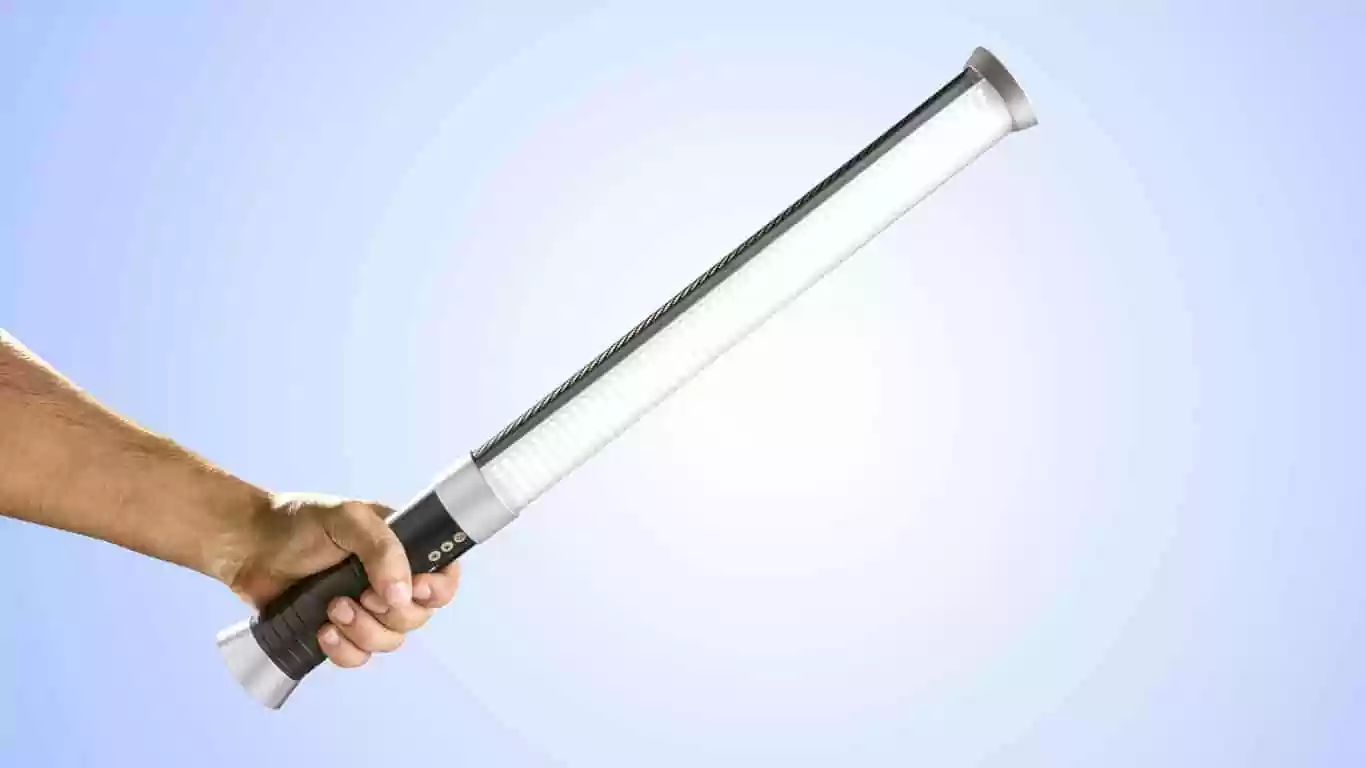
This is another kind of LED illumination commonly seen on older digital clocks. However, their popularity has waned in recent years due to the advancements in LED technologies.
Alphanumeric LEDs are a type of LED display. They’re available in various shapes and sizes, but most are small and compact.
Alphanumeric LEDs are perfect for home, office, or workshop use. These LEDs are used to display text or numbers. They come in a variety of different styles, including dot-matrix and bar-graph.
Different Types of Alphanumeric LEDs:

Bar Graph LEDs are a type of LED display. They’re typically used to indicate an electrical circuit’s voltage or current level.
Bar Graph LEDs are perfect for home, office, or workshop use. These LEDs come in various shapes and sizes, but most are long and thin.
Different Types of Bar Graph LEDs:
Standard LED Bar graph: Standard LED bar graphs are the most common type of LED bar graph. They have a linear array of LEDs that increase in intensity as they move from left to right.
Analog Bar Graph: Analog bar graph LEDs are similar to standard LED bar graphs, but they have a more traditional bar-graph style.
Voltage LED Bar graph: Voltage bar graph LEDs are similar to standard bar graphs, but they display the voltage of an electrical circuit instead of current.
Current LED Bar graph: Current LED bar graphs are similar to standard ones, but they display the draft of an electrical circuit instead of voltage.
RGB LED Bar graph: RGB LED bar graphs are similar to standard LED bar graphs, but they have three channels of LEDs that can be used to create a variety of colors. These LEDs are often used in applications where a user needs to control the display’s colors.
Temperature LED Bar graph: Temperature LED bar graphs are similar to standard bar graphs, but they display the temperature of an electrical circuit instead of voltage or current. These LEDs can be found in ovens, freezers, and temperature control units.
Boost LED Bar graph: Boost LED bar graph LEDs are similar to standard bar graphs but have an integrated boost converter.
This allows the LED array to be less bulky than other bar graphs. These LEDs are often used in low-current circuits where a standard LED bar graph would not work.
Ceiling LED Lights are a type of LED light. They’re perfect for use in the home, office, or workshop.
Ceiling lights can provide ambient, directional, or task lighting. They’re available in various shapes and sizes, but most are small and compact.
Ceiling lights usually have a reflector to direct light downwards like ambient light or a lens to focus on a directional LED.
Different Types of Ceiling LED Lights:

The color of the red, green, and blue LEDs is produced. These three lights are combined in various methods to create the desired hue.
There are many different RGB LEDs today, but they all work on the same principle: they receive input from an electrical circuit and emit red, green, and blue light.
RGB LEDs are often used in applications where users need to control the display’s colors.
Different Types of RGB LED Lights:

Flashing LEDs are a type of LED with integrated circuits that allow them to flash on and off at very high speeds.
Typically flashing LEDs have an internal resistance that limits the current flow through the led. This prevents them from overloading your circuit.
Flashing LEDs are used in various applications where the user needs to manage high currents. They’re often used as warning lights, information signs, and signal indicators.
Traffic lights are a type of flashing LED used in traffic management. Traffic lights use LEDs in both the red and green lights, while yellow is produced by reducing the intensity of these two lights.
Many different factors manage traffic with LEDs, including using arrays or single-light units to ensure the traffic signals are easily visible.
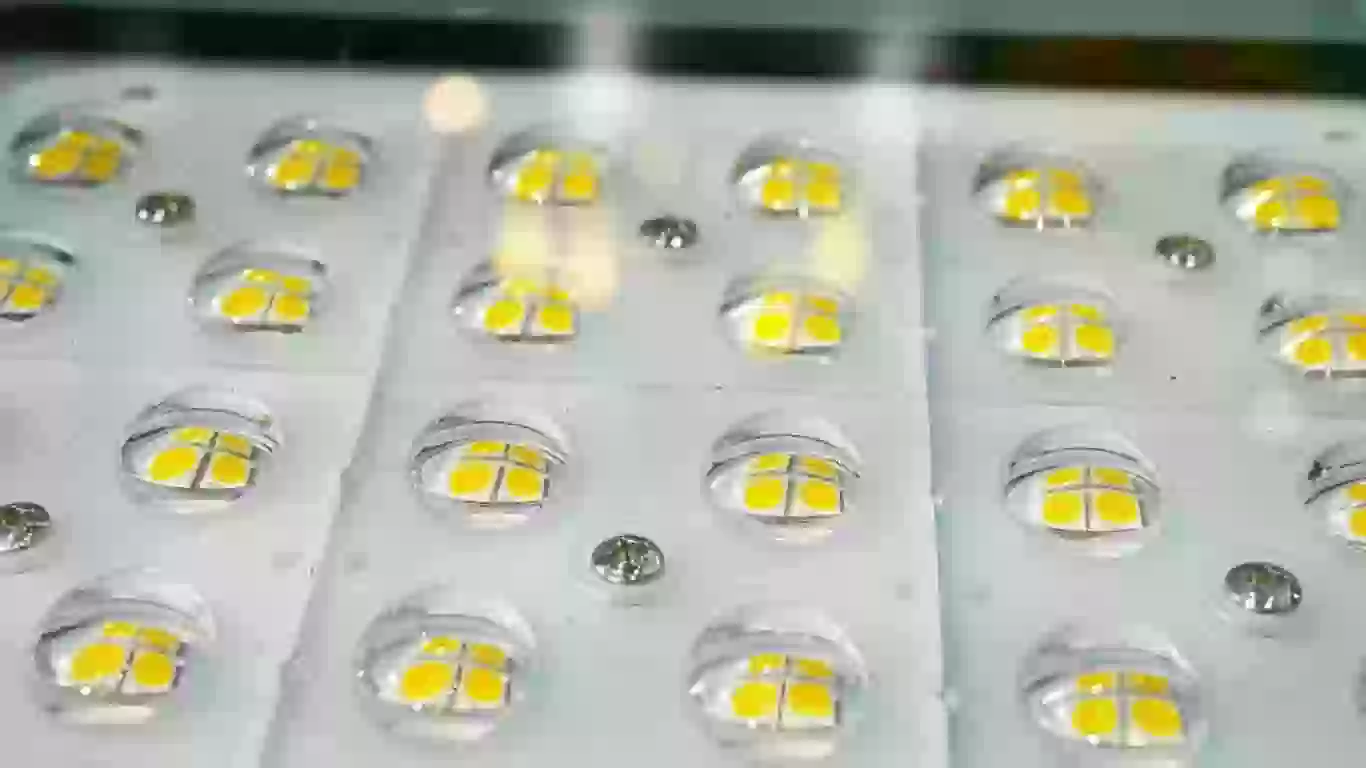
A bi-color or tri-color LED has two or three different light sources built into the same package.
Bi-color LEDs typically have a red and green diode (or SMD) in one package, while tri-color LEDs usually consist of two individual diodes (red and green) along with a blue LED.
These LEDs are often used in applications where the user needs to control the display’s colors.

Although LED lights are expensive to purchase initially, they pay for themselves over time because you didn’t have to change them often, unlike incandescent lamps.
If you want to save money on your electricity bills, it’s better to switch from incandescent light bulbs to LED or CFL (Compact Fluorescent) lights.
LED light bulbs are more energy-efficient than incandescent lamps; they use less electricity to provide you with the same amount of lighting, whereas incandescent lamps need 60 watts to produce the same 800 lumens, which makes them five times less efficient than an equivalent LED light bulb.
Suppose you want to make your home environmentally friendly and help protect the environment from greenhouse gases.
In that case, it’s a good idea to invest in high-quality LED light bulbs because they don’t contain mercury or emit harmful UV rays, which can cause skin problems or damage your vision.
Please feel free to post your valuable comments /suggestions, as we aim to provide more and more quality information through this platform…!
You can also subscribe to us to get the latest updates regularly in your email inbox.
What does LED stand for, and what are they?
Ans: Light Emitting Diodes (LEDs) are solid-state devices that produce light in a very energy-efficient manner. Though they were initially used for electronics, they also power small appliances like calculators and digital clocks. LEDs use semiconductor technology to emit different frequencies of visible light, which can appear as white, red, green, and blue.
What is LED Motion?
Ans: LED Motion refers to a range of motion sensors designed with LED lighting. These sensors detect the presence of people in a room and turn lighting on or off depending on their movements. They require no wiring and can be used with conventional motion detectors.
What types of LED light bulbs are available?
Ans: The most common types of LED light bulbs include: floodlights, spotlights, and lamp posts which can be used in gardens and for lighting streets and sidewalks. Other widely used LED light bulbs have the ones found in exit signs and traffic lights. The latest LED light bulb type is flexible LED strips that can decorate your house, bicycle, or automobile.
How do LED light bulbs work?
Ans: To understand how LED light bulbs work, we must first know that all electronic devices and appliances require electricity (the flow of electrons) to function. When electricity travels through a wire, it generates light in the form of visible or infrared radiation. LEDs are made of semiconductor materials like silicon, germanium, and gallium arsenide, containing impurities to create a p-n junction. When voltage passes through this junction, electricity is generated, transformed into visible light.
Why is LED Lighting the next generation of lighting?
Ans: LED lights have several advantages over incandescent and CFL bulbs.
LEDs produce more light with less energy which means you can save up to 80% of your electricity bills compared to conventional lighting. An LED bulb uses only 20-25% of the power consumed by an equivalent CFL light for producing the same amount of light. This is an advantage because it makes them cost-efficient and environmentally friendly.
LEDs are also more durable than CFL or incandescent bulbs as they last up to 50 times longer.
Most LED lamps are shockproof, mercury-free, and highly reliable, which means you can install them in places where conventional lamps cannot be used.
An LED light also uses minimal space, making it ideal for narrow fixtures and tight spots where lights using fluorescent tubes or halogen bulbs cannot be placed.
What features should you look for in an LED light bulb?
Ans: There are several factors that you must consider before purchasing an LED light bulb, such as lumens, watts, and voltage. For example, a 60-watt incandescent light bulb produces 800 lumens, whereas a 9-watt CFL (Compact Fluorescent) emits 800 lumens. When you are buying LED light bulbs, it’s essential to check the number of lumens they produce so that they can provide you with enough lighting without being too bright or too dim.
Is LED lighting superior to incandescent or halogen light?
Ans: Absolutely! LED lights provide low-level illumination for extended periods, making them ideal for commercial applications.
Incandescent bulbs are inefficient in converting energy into light and heat. Instead of creating light, they produce 80-90 percent of their energy as heat. LED lights are more 85 % energy-efficient than incandescent bulbs. As a consequence, they require less power to produce the same amount of light.
Are LED lights cheaper to run?
Ans: Not only are LED lights more energy-efficient than other types of lighting, but they also save you money on your electricity bills. Since they emit very little heat, less power is required to cool them down, which means reduced cooling costs.
A 60-watt incandescent bulb can be replaced with a 12-watt LED.
What causes LED lights to flicker?
Ans: Dimming a light or changing its color temperature can cause LED lights to flicker. Flickering results from the human eye’s inability to see slow changes in light levels. This problem can be solved by ensuring proper insulation between AC power circuits and dimmer switches, properly shielded wiring, and low-frequency electronic ballasts.
Are LED lights suitable for growing plants?
Ans: LED lights are used by people growing plants indoors to provide essential light for photosynthesis. These lights produce little heat and consume less power than other types of lighting, making them ideal for plant growth.
Are LED lights bad for your eyes?
Ans: LED lights are low-intensity lights which means they don’t pose any severe health hazard to your eyes. Since these are not high-level light sources, you need not worry about eye strain or fatigue that people often experience after staring at incandescent or fluorescent lamps for a long time.
LEDs are now being used in cars and to light highways and streets. They save energy and money, reduce greenhouse gas emissions that cause global warming, and help save the environment.
We would love to hear from you!
Product List
Quick Contact